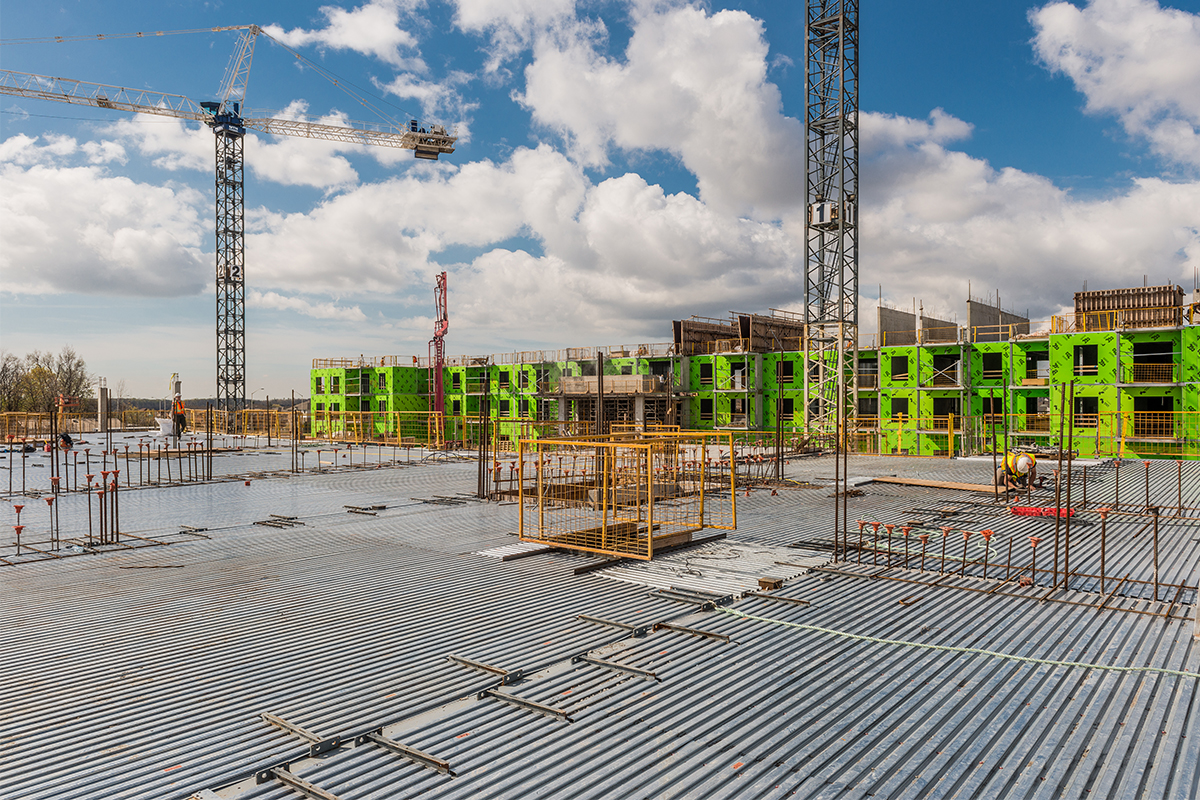The construction industry is a vital sector, shaping our cities, infrastructure, and living spaces. However, it's also an industry fraught with complexities and challenges. From managing budgets and timelines to ensuring safety and quality, construction projects require constant vigilance and proactive problem-solving. Let's delve into some of the most common hurdles faced in construction and explore strategies to overcome them:
1. Budget Overruns:
In construction, staying within the designated budget is a constant battle. Unforeseen expenses, material price fluctuations, and changes in project scope can quickly derail financial plans.
Overcoming Budget Challenges:
- Thorough Cost Estimation: Employ detailed cost estimating techniques that factor in historical data, labor costs, material quotes, and potential fluctuations.
- Cost Control Measures: Implement cost control measures throughout the project lifecycle. Regularly conduct cost variance analysis to identify deviations from the budget and take corrective actions.
- Value Engineering: Value engineering involves analyzing and optimizing project elements to reduce costs without compromising quality or functionality. Explore alternative materials, construction methods, or designs that deliver the same outcome at a lower cost.
- Contingency Planning: Allocate a contingency fund in the budget to address unforeseen circumstances. This buffer can help absorb unexpected costs without derailing the project entirely.
2. Sticking to the Schedule:
Time is money in construction. Delays can lead to financial penalties, disrupt workflows, and cause domino effects on other projects.
Overcoming Scheduling Challenges:
- Detailed Scheduling: Develop a comprehensive and realistic project schedule that factors in material lead times, labor availability, and potential delays due to weather or unforeseen circumstances.
- Critical Path Method (CPM): Utilize project management techniques like the Critical Path Method (CPM) to identify critical tasks that dictate project timelines. Focus on optimizing these tasks to minimize delays.
- Regular Monitoring and Progress Tracking: Continuously monitor progress and identify potential bottlenecks early on. Implement corrective actions to get the project back on track. Communication is key here; keeping stakeholders informed of any schedule adjustments is crucial.
- Risk Management: Proactive risk management helps anticipate and mitigate potential delays. Identify potential risks like bad weather, material shortages, or labor disputes, and develop contingency plans to address them.
3. Maintaining Quality:
Delivering a project that meets quality standards is paramount. Faulty construction can lead to safety hazards, rework, and reputational damage.
Overcoming Quality Challenges:
- Clear Specifications and Quality Control Plans: Clearly define quality expectations in project specifications. Establish a comprehensive quality control plan that outlines inspection procedures, testing protocols, and non-conformance management processes.
- Skilled Workforce: Invest in a skilled and experienced workforce. Provide proper training and ensure workers understand the quality standards required.
- Regular Inspections: Conduct regular inspections throughout the construction process to identify and address quality issues early on.
- Quality Assurance (QA): Implement a Quality Assurance (QA) program that involves independent reviews to ensure adherence to quality standards.
4. Prioritizing Safety:
Construction sites are inherently dangerous environments. Ensuring worker safety is not just an ethical responsibility, but also a regulatory requirement.
Overcoming Safety Challenges:
- Safety Culture: Foster a strong safety culture on-site. This involves prioritizing safety in all aspects of the project, from planning to execution.
- Hazard Identification and Risk Assessment: Proactively identify potential safety hazards and conduct risk assessments to determine the severity and likelihood of occurrence. Implement control measures to mitigate these risks.
- Safety Training and PPE: Provide comprehensive safety training to all workers on the site. Ensure they understand safe work practices and wear appropriate Personal Protective Equipment (PPE) at all times.
- Incident Reporting and Investigation: Establish a system for reporting and investigating safety incidents. Analyze incidents to identify root causes and implement preventive measures to avoid future occurrences.
5. Communication Breakdowns:
Construction projects involve a diverse group of stakeholders, from architects and engineers to contractors and subcontractors. Ineffective communication can lead to misunderstandings, delays, and costly errors.
Overcoming Communication Challenges:
- Clearly Defined Communication Channels: Establish clear and well-defined communication channels for all project stakeholders. Utilize a central platform for document sharing, project updates, and discussions.
- Regular Meetings: Conduct regular project meetings to ensure everyone is on the same page. Encourage open communication and address any concerns promptly.
- Detailed Documentation: Maintain detailed project documentation, including meeting minutes, drawings, specifications, and change orders. This ensures everyone has access to the latest information.
- Technology Adoption: Utilize technology solutions like project management software, video conferencing tools, and real-time communication platforms to facilitate seamless communication and collaboration.
The construction industry is constantly evolving, and so are the challenges it faces. However, by adopting a proactive approach, utilizing innovative solutions, and fostering a culture of collaboration, these challenges can be effectively overcome. Here are some additional trends that are shaping the future of construction and helping to mitigate these common hurdles:
- Building Information Modeling (BIM): BIM is a digital representation of a physical facility that creates a central source of truth for all project information. BIM allows for clash detection, improved coordination between disciplines, and better visualization of the finished product, leading to fewer errors and improved efficiency.
- Modular Construction: Modular construction involves building components off-site in a controlled environment. This approach offers greater quality control, reduced weather delays, and faster project completion times.
- Automation and Robotics: The construction industry is starting to embrace automation and robotics for tasks like welding, bricklaying, and prefabrication. This can improve productivity, reduce labor costs, and enhance worker safety.
- Sustainability: There's a growing focus on sustainable construction practices. This includes using eco-friendly materials, optimizing energy efficiency, and minimizing waste. Sustainable construction not only benefits the environment, but can also lead to long-term cost savings.
By embracing these advancements and remaining adaptable, construction companies can navigate the ever-changing landscape and deliver high-quality projects on time and within budget. The future of construction is bright, with a focus on innovation, collaboration, and a commitment to building a better future, one project at a time.




